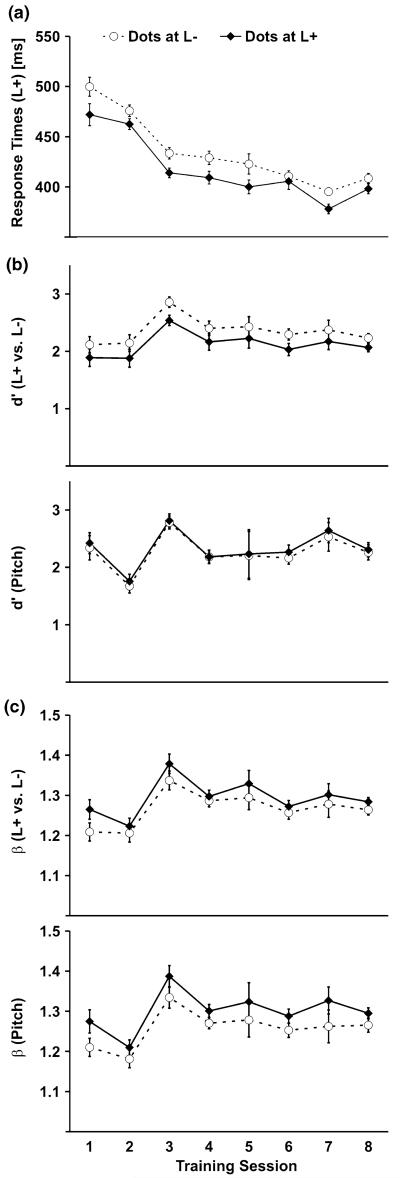Fig. 4.
Auditory training performance for sound detection. a Response times to target sounds presented at the relevant location (L+) decreased across training sessions. b Sensitivity (d’) for discriminating the sound location (L+ vs. L−) was lower when dots appeared at the same location as the sound (dots at L+) than at the opposite side (dots at L−). The location of the dots had no effect on measures of d’ for discriminating the pitch of the sounds. c Participants were more likely to incorrectly respond to distractor sounds when dots appeared at the same location as the sound (dots at L+) as indicated by a positive shift in response bias (β). Error bars reflect within-subjects SEM (Loftus and Masson 1994)

